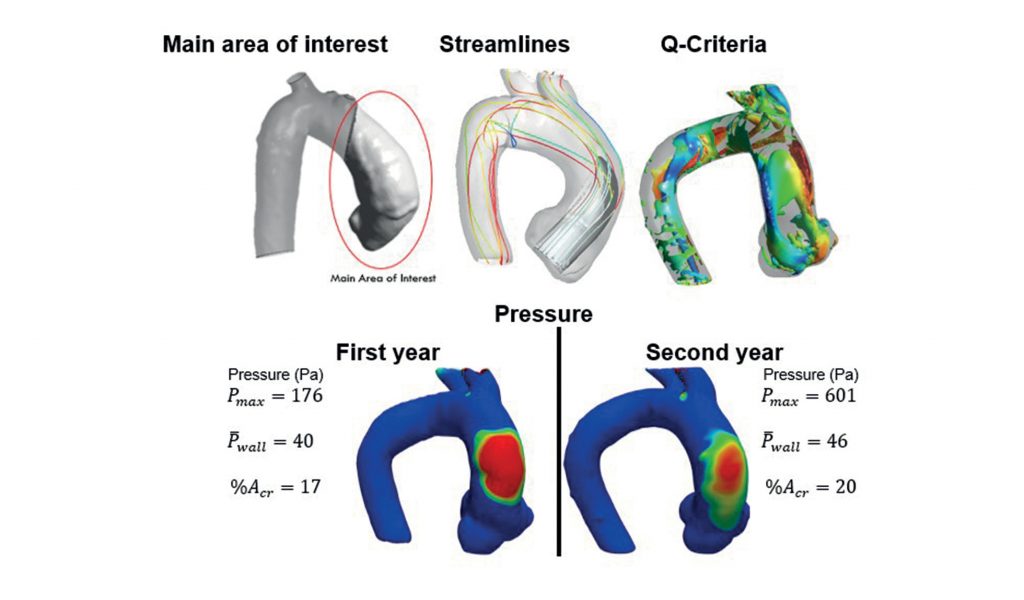Arq. Bras. Cardiol. 2022; 118(2): 448-460
Computational Fluid Dynamics to Assess the Future Risk of Ascending Aortic Aneurysms
This Original Article is referred by the Short Editorial "Computational Fluid Dynamics (CFD) For Predicting Pathological Changes In The Aorta: Is It Ready For Clinical Use?".
Abstract
Background
A methodology to identify patients with ascending aortic aneurysm (AsAA) under high risk for aortic growth is not completely defined
Objetive
This research seeks to numerically characterize the aortic blood flow by relating the resulting mechanical stress distribution with AsAA growth.
Methods
Analytical, observational, single-center study in which a computational fluid dynamics (CFD) protocol was applied to aortic computed tomography angiogram (CTA) images of patients with AsAA. Two CTA exams taken at a minimum interval of one year were obtained. From the CTA-gathered images, three-dimensional models were built, and clinical data were registered. Study of velocity field and coherent structures (vortices) was performed aiming to relate them to the presence or absence of aneurysm growth, as well as comparing them to the patients’ clinical data. The Kolmogorov-Smirnov test was used to evaluate the normality of the distribution, and the non-parametric Wilcoxon signed-rank test, for non-normal distribution, was used to compare the paired data of the aortic angles. Statistical significance was set at 5%.
Results
The incident jet in the aortic wall generated recirculation areas in the posterior region of the jet, inducing complex vortices formation in the group with aneurysm growth, leading to an average pressure increase in the ascending aortic wall between exams. In the group without aneurysm growth, the average pressure decreased.
Conclusion
This pilot study showed that CFD based on CTA may in the near future be a tool to help identify flow patterns associated with AsAA remodeling process.
Keywords: Aortic Aneurysm; Hemodynamics; Patient-Specific Modeling; Thoracic
1,443

